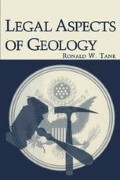Abstract
The “rules of law” function to guide and control the agencies of government and the behavior of individuals who are subject to the government. Rules of law can thus be viewed as a system for shaping behavior and adjusting or avoiding disputes. As such, law draws from the common expectations of society. Some rules of law represent regulations promulgated by executive order or by governmental administrative agencies. Others represent statutes, constitutions, or constitutional amendments developed by the legislative branch of government. The authoritative opinion of the courts will frequently set forth the precise construction to be given to these rules of law, and a succession of opinions on particular cases may lead to the development of “basic legal doctrines.” Where the legislative and executive branches of government are silent on a matter before the court, the court will not hesitate to articulate new law. There are also, of course, innumerable rules and standards of conduct that have their origin in community custom rather than any deliberate act of the government. Some of these customs may be enforceable by a formal agency of government. Others are not enforceable but, as we shall see, many rules of law, such as those governing mining, have had their origin in community custom.
“The law has its origin in necessity and its foundation in reason.”
Daily State Register (December 9, 1871)
Carson City, Nevada
Access this chapter
Tax calculation will be finalised at checkout
Purchases are for personal use only
Preview
Unable to display preview. Download preview PDF.
References and Suggested Reading
Goldman, S., and Jahnige, T. (1976), The Federal Courts as a Political System, 2nd ed., Harper & Row, New York.
Kiersch, G. (1969), The geologist and legal cases—Responsibility, preparation, and the expert witness, Engineering Geology Case Histories, No. 7, Geological Society of America, Boulder, Colo., pp. 1–6.
Mayers, L. (1973), The Machinery of Justice: An Introduction to Legal Structure and Process, Littlefield, Adams, Totowa, N.J.
Mermin, S. (1973), Law and the Legal System—An Introduction, Little, Brown, Boston.
Stone, C. (1974), Should Trees Have Standing? Toward Legal Rights for Natural Objects, W. Kaufman, Los Altos, Calif.
Author information
Authors and Affiliations
Rights and permissions
Copyright information
© 1983 Plenum Press, New York
About this chapter
Cite this chapter
Tank, R.W. (1983). The American Judicial System. In: Legal Aspects of Geology. Springer, Boston, MA. https://doi.org/10.1007/978-1-4684-4376-9_1
Download citation
DOI: https://doi.org/10.1007/978-1-4684-4376-9_1
Publisher Name: Springer, Boston, MA
Print ISBN: 978-1-4684-4378-3
Online ISBN: 978-1-4684-4376-9
eBook Packages: Springer Book Archive

